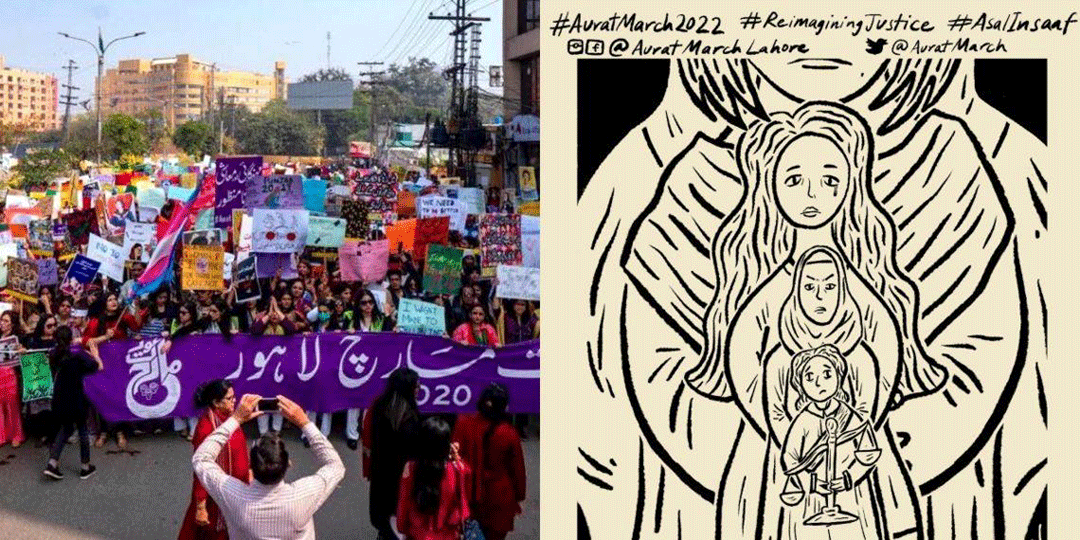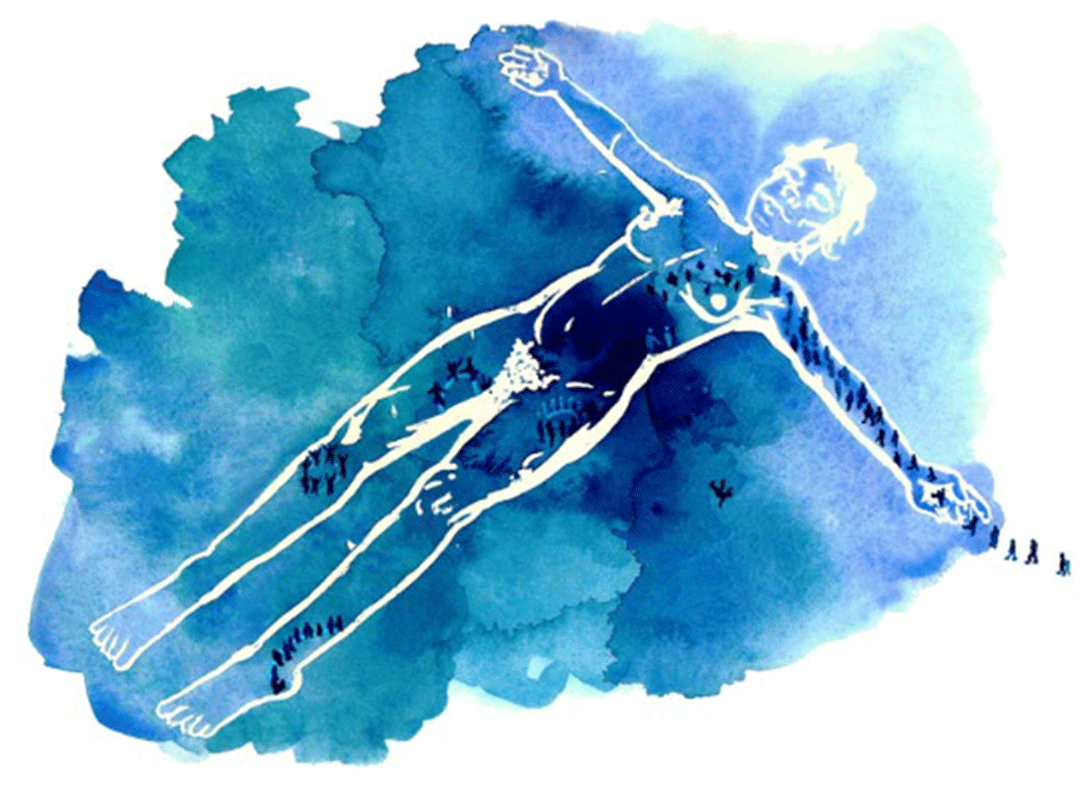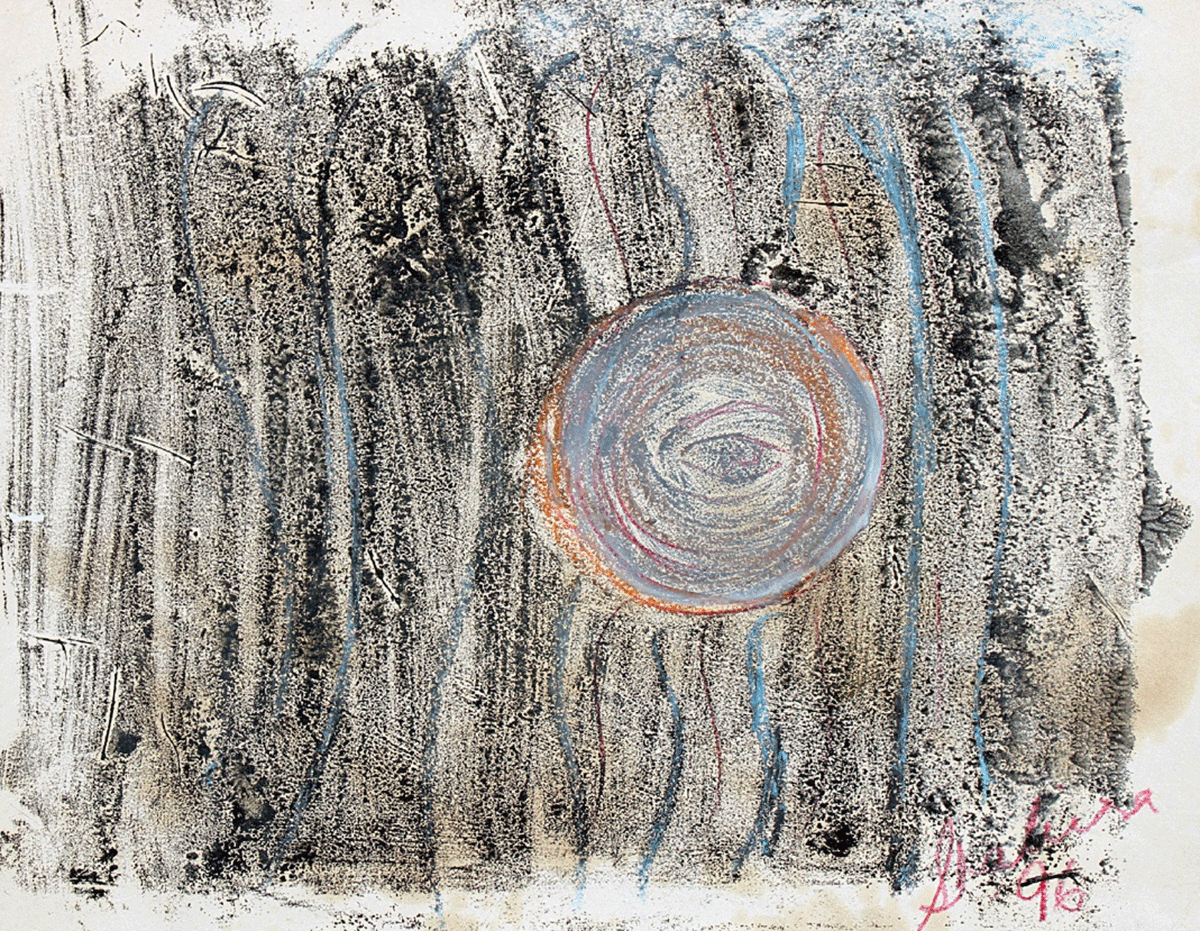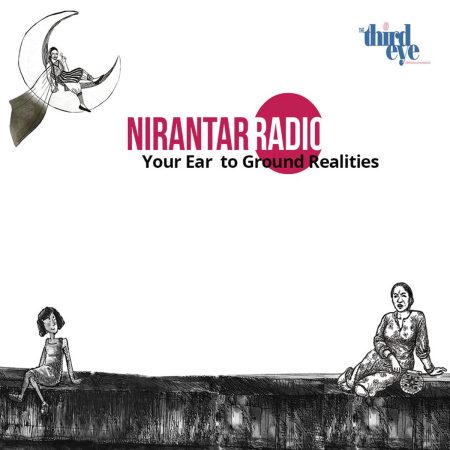
In 2022, the theme for Pakistan’s annual Aurat March was Reimagining Justice. The manifesto highlighted failures of the criminal justice system, and emphasised the need to build a “feminist culture of care that looks beyond the individual to address structural violence”. The word ‘care’ it said, needs to be “decoupled from stereotypical understandings of feminine traits and envisioned as collective responsibility”.
As feminist movements take cognisance of the layered injustices of gender with caste, class, sexuality, race, disability and other marginalisations, this task of reimagining justice—to fight structural violence and build a system of care—has become increasingly central to our struggle. It arises in response to unending gender violence and sexual crime, and from an understanding that the world we live in is culturally, politically and economically designed to create and perpetuate oppression. It also arises as we witness an alarming increase in the number of women in prison.

As noted in a statement by the radical feminist organisation INCITE!, mainstream anti-violence movements rely heavily on the criminal justice system to end violence against women, but this approach of criminalisation has not only failed to reduce crime but also actively brought many women into conflict with the law—particularly women of colour, poor women, queer and trans women, sex workers, immigrant women, women with disabilities, and other marginalised women. In India, this holds especially true for Dalit, Bahujan, Adivasi, and Vimukta (DBAV) women as well, for despite the repeal of The Criminal Tribes Act in 1952, racist and casteist notions continue to permeate the police and judiciary. Given that men from these marginalised backgrounds are also disproportionately incarcerated, the women in their families end up paying the price as they are forced to bear an additional financial, emotional and physical burden.
The fact that criminalisation doesn’t work to deter crime and instead adversely affects marginalised women has led the feminist movement to investigate pertinent questions: What causes crime in the first place? Why is there disproportionate incarceration of marginalised women and their families? And how can we reimagine justice to address the root of the problem and fight oppression?
One of the approaches feminist groups are exploring in the process of answering these questions is that of restorative justice. In this article, we attempt to understand the problems its practitioners in India are trying to address and what the practice entails on the ground.
…
The criminal justice system that was born in Western nations and imposed upon the world through imperialist machinery, is based on two fundamental beliefs: first is a punitive philosophy that favours ‘rightful’ rigorous punishment for individuals who commit crime—i.e., those who break the law. Second is a belief in the reformatory effect of imprisonment and penance. The restorative justice approach, on the other hand, draws from some of the practices and values of Native American as well as Maori tribes1. It views crime as harm done to an individual and/or community and tries to focus on how best to repair the situation and provide those harmed with an opportunity to identify and communicate what measures may truly enable their recovery.
Rather than punishment and suffering as a means to reform the individual who caused harm, it tries to shift the focus on accountability, apology and repair of harm instead.
One significant result of this difference in the two approaches is that effectively, the punitive system ends up dissuading people from admitting to and acknowledging the harm they’ve caused, while the restorative process actively encourages it.
Restorative justice has a complex approach to ideas of healing, care and justice, so let’s look at its fundamentals.

In criminal justice systems, the responsibility of executing punishment, that is the consequence for committing crime, is solely placed upon the State. The nature of punishment is the job of the State’s legal agents. By centering those harmed, the restorative approach involves them in the process of determining what can be done to best repair the harm caused. In this it goes beyond the binary of victim-perpetrator to involve those indirectly affected by the harm as well (such as family members, classmates, or neighbours for example). That said, the measures identified by those harmed must be carefully examined as well. The overbearing system of the law and the state conditions people to depend on retribution as the sole path to justice. Victims and their families can thus ask for stringent punitive measures. By including the community beyond the two individuals involved, RJ processes attempt to facilitate an understanding of crime as caused not purely by individual pathology but also factors that the community must take responsibility for. In doing so, it tries to make space for acknowledgement that those who cause harm have often been subject to some form of harm themselves.
In a short story, titled ‘Justice’, Mariame Kaba, an abolition feminist from the United States, imagines an introspective community in a world called Small Place (SP). A place where “vengeance is not justice”, the story imagines a community that takes harm as an aspect of human life that needs to be addressed by everyone. “What I love the most about living in SP is that we look out for one another; when one person in our community experiences harm, all of us are harmed. It’s one of our most sacred and important values,” says Adila, the protagonist.

Harm, rather than crime, is the crux of restorative justice.
Approaches to justice must be rooted in collective care and accountability, otherwise we may forget our ‘common humanity’. Such is the message by Kaba.
“Restorative justice processes are processes in which the parties most affected by a harm come together with the help of a facilitator and try to work on repairing the harm caused. The processes focus on repairing the harm by addressing 1) needs that arose from the crime, 2) the obligations of the person who caused harm and 3) the causes that lead to the crime.” – FAQs booklet by CSJ.
This facilitation can take a variety of forms. Some of these include:
- Dialogues – between the one harmed and the one responsible.
- Circles – these include the community and involve sequential speaking so that everyone has an opportunity to share their perspective. Different kinds of circles such as harm circles, listening circles, peacemaking circles, sentencing circles, etc., are conducted depending on the need.
- Conferencing programmes – similar to circles but instead of sequential speaking, the order is directed by the facilitator and questions are predetermined.
Restorative justice in cases of sexual crime
“… [E]xperience and extensive studies show us that there is no correlation between crime reduction and the death penalty… Using dehumanising language for perpetrators, labelling them “monsters” and “animals” deserving of death, only services to individualise crime and violence as a result of an individual’s pathology, rather than outcomes of complex social drivers like inequity, historical lack of opportunities, gender stereotypes and expectations, poverty and isolation.” – Aurat March manifesto, 2022
From the Mathura case (1972), to Vishakha (1997), Nirbhaya (2012), Shakti Mills (2013) and #MeToo (2017), the feminist movement in India has repeatedly struggled for legal reform, recognition of crime, and utilisation of existing legal measures. In cases like Nirbhaya’s where public outrage played a significant role however, the media rhetoric soon spiralled into one of honour and retribution. The greater the dishonour to women of the nation, the greater the punishment must be and thus the state responded with the Criminal Law (Amendment) Act, 2013 that introduced the death penalty in cases of heinous sexual violence.
Even in cases where feminist legal reform has been achieved, the fact remains that a majority of sexual violence survivors choose not to report the crime. This is partly caused by the sheer time and money required for legal recourse—massive pendency in court, legal fees, and the time taken for hearings (held only once or twice a year) and verdicts (that take three years on an average). Another major cause for underreporting however, is the factor of rape culture. Not only is it taboo to speak about sex, we are also brought up in a society where sexual abuse is normalised and silenced, where disrespect towards the bodies of others is actively fostered and encouraged. Survivors face harassment, violence, and shame from their own families, wider public, media, and law enforcement agents themselves, including police and judges. It is crucial therefore to address the cultural plane of the problem.
In 1977, the Santa Cruz Women Against Rape wrote an open letter to the Anti-Rape Movement:
An additional factor to account for while addressing sexual crime is the fact that the majority of cases involve people known to the survivor. The Counsel to Secure Justice was started in response to increasing cases of child sexual abuse (CSA) in India. In a 2018 report, they note:
“A 2007 study conducted by the Ministry of Women and Child Development revealed that 53.2% of children interviewed had suffered sexual abuse and 20.9% of children, severe sexual abuse. This problem persists across gender lines: more boys disclosed sexual abuse than girls. However, across the entire country in 2016, only 19,765 child rape cases under Section 376 of the Indian Penal Code and 36,022 sexual offences under POCSO were registered with police.”
The fact that nearly 95% of CSA cases in India involve a person known to the child, the unbreachable stigma around sex-related offences, the question of family honour, victim-blaming and disbelieving them are all possible reasons for this massive issue of underreporting. The report includes lessons from experiences of activists in the field, and notes that the current system offers hardly any closure for survivors.
“Survivors can actually want to remain connected to their abusers,” said Anuja Gupta, Executive Director, RAHI Foundation. “The assumption is that people want to break off, which is very true in a lot of cases. But what I have found a fair amount in incest cases where the relationship is very close … what they are looking for is for the abuse to stop, or if it is already stopped, then it must be acknowledged. Girls tell me, ‘Anuja, I love my father. I just want the abuse to stop.’” (CSJ report)
The report further explains that while criminal convictions are a public acknowledgment of harm, they may not provide the “same sense of vindication as an apology from the offender or being believed by those closest to them”.
As the people of Hollow Water—a Canadian Indigenous community that has engaged with restorative practices since the 1980s—say “incarceration means that offenders can hide from, rather than face their responsibilities for the pain they have caused.”
In 2015, Sujatha Baliga started Impact Justice, a US-based non-profit that works on restorative justice in cases of sexual abuse. She says:
“As a restorative justice facilitator, my work begins with asking what survivors want from meeting with the person who harmed them. While their answers vary, in sexual violence cases there is a common thread—they want to hear the person who assaulted them say, “You’re telling the truth. I did that to you. It’s my fault, not yours.” They often want this admission to happen in the presence of both of their families and friends. Most survivors are also looking for some indication that the person who harmed them truly understands what they’ve done and that they won’t do it again. Some request to never have to see that person again.”
At a talk in 2022, Baliga went on to cite data from the Ministry of Justice, pointing to the fact that in cases of domestic violence against women, 50% of survivors do not contact the courts at all, while 20% of those who do ultimately say that the process made them feel “less safe”. She argued that a big reason for this is that while the justice system is oriented towards the 30% of women who want “an out” from the situation and wish to distance themselves from the person causing harm, it is simply not oriented towards the 70% of women who either want or need to stay.
“[T]he carceral response overlooks the importance of exit options for survivors. Laws criminalizing marital rape or workplace assault won’t help women with nowhere else to go, nor those with no way to get there.” (Feminism for the 99%)
While the punitive approach discourages offenders from acknowledging the harm they have caused, the restorative approach encourages it.
Only with acknowledgment can the conversation then proceed to figuring out what kind of reparations need to be made and how.
“Laxmi’s father was sentenced to life imprisonment for raping her, and she received three lakh rupees compensation. But Laxmi’s mother never believed her. After Laxmi testified, her mother approached her at the court and disowned her, telling her daughter she was dead to her. The criminal justice system delivered Laxmi the best possible recourse law could give, but Laxmi’s need for restoring the relationship with her mother remained unmet. While Laxmi was glad to win her father’s conviction, overall, she was grief-stricken. She had lost relationships with each of her parents.” (CSJ report)
As illustrated in the example above, we often need to break the binary of survivor and offender, and account for others involved. The possibility that offenders might have themselves suffered abuse at some point in their lives also requires that the restorative justice process help them address the harm they themselves have experienced while simultaneously taking responsibility for the harm they have caused. Baliga trains practitioners in restorative justice and in 2018, she trained Swagata Raha and Arlene Manoharan, who are now part of the Restorative Practices team at Enfold. In addition to adopting a restorative justice approach in cases of CSA, the team at Enfold also works with children in conflict with the law, i.e., the field of juvenile justice.

Restorative justice for and among children
Juvenile justice in India has a much older familiarity with values of restorative justice than most other fields of law. As pointed out in Raha’s paper on the subject, as far back as the Indian Jail Committee report of 1919-20, juvenile justice legislation has recognised the role of “unfavourable environments” in causing crime among children and has been more open to the idea of restoration. This has been reflected in subsequent legislation such as the Juvenile Justice Acts of 1986, 2000 and 2015 which followed the principle that institutionalisation must only be used as a last resort and include provisions for diversion (of cases from courts to social workers and third parties such as NGOs) and reintegration (of the accused children into society). That said, non-implementation of these Acts has been a persistent issue, first acknowledged by the courts in 2009 when a committee was formed to oversee the departments concerned on the executive end. This process, through which Justice Madan Lokur and other High Court judges of the time visited a number of remand homes to understand the situation on ground, resulted in regular regional and national-level round table conferences on the matter. Manoharan, who was brought in along with Raha as a technical expert, explains that this year, at the ninth such round table conference, the theme is Prevention, Restorative Justice, Diversion and Alternatives. “Personally, I feel it’s a bit early,” she says, “but it’s triggering amazing conversations.”
“You can’t jump into restorative justice,” says Raha, explaining that although they initially thought of it as a “magic bullet” and rushed to see it in the law, they now feel a need to understand the values better and improve their own skills before advocating solutions. “There is too much structural harm here, people are living within an oppressive system. You have to connect them to material and rehabilitative services to address the very real existential issues they deal with on a daily basis. It’s not enough to say participate in a circle and problems will be resolved.” she says. During the Covid-19 pandemic for instance, the restorative justice team at Enfold had to shift gears from conducting circles to providing rations and addressing other immediate needs related to case work support at the Children’s Home for Girls. As Baliga said, restorative justice practices require a constant return to the essential questions of “What is needed and whose responsibility is it?” In a sense then, restorative processes inherently have to recognise the need for structural transformation. It’s very important to have this frame, says Swagata, as frames help remind people of what restorative justice is and isn’t. The conflation of restorative justice with mediation for instance, is a common misconception.
Mediation | Restorative justice |
Often used in cases where both parties have contributed to harm. | Clear distinction between those harmed and those who caused harm. |
Tends to focus on resolution through financial settlement. | Focus on collective responsibility, acknowledgement of harm, and the needs of those harmed. |
Only involves those directly known to either one of the two parties. | Includes affected communities/individuals who might not be known by either of the parties. |
Involves lawyers who defend their clients’ interest and discourage admission of guilt. | Involves facilitators with neutrality as an objective who actively encourage acknowledgement of harm caused. |
However, Raha goes on to add that we cannot allow our theoretical frames to limit the way we define the work. Citing the example of a High Court judge in Madhya Pradesh who made planting of trees a condition for bail, she says, “We may not see this as restorative justice, but the arid land is now green and he’s restoring a sense of value in the convict to the community.”
Viewing people beyond the harm they have caused is central to the philosophy of restorative justice and the transformative process of taking collective responsibility for crime in society.
When restorative justice meets the ground
Picking up the same thread of transformation, Manoharan shares her experience of conducting restorative circles at a state-run home for girls. “Often it feels like we just do one circle and leave, even if people are still crying, our time is over, we have to leave. But then we realised even that one moment of connection—when a child is allowed to cry, to be heard—is a very, very powerful moment where trust is built. Empowerment is generated within the circle that hey, this law is meant for me. They start supporting each other. It gives us hope.”
Circles, however, are not devoid of power dynamics and it is crucial that facilitators repeatedly sensitise themselves and others of the myriad ways in which identity plays out in defining relationships. “We’ve had circles where the women have been absolutely silent,” says Raha, pointing to a deep gender divide. At the same time, circles can create a sense of equality. Referring to a training they conducted on restorative circles in 2021, she adds, “We’ve also had circles where people with skin conditions have said that, for the first time, they felt equal; having a conversation that was not about their appearance.” Manoharan refers to a circle conducted at an observation home where everyone, from the head of an institution to the tailoring staff, had to come together, sit on the same kind of chairs and hear each other out. “It was difficult for them,” she says, “a sense of respect had to be demonstrated, not just spoken of.”
The same holds true for restorative justice practitioners themselves. Prep work is required before the process for them to understand who the participants are and where they’re coming from; and similarly, a debriefing process is required afterwards to reflect on who they were during the process and what they can do differently next time. “It requires us to lean into deep and brave conversations amongst ourselves,” explains Manoharan. As Dee, a member of the Enfold team and of Alternative Justice, says, “Just as the prison mindset moves beyond the prisons and exists in our interactions with each other, the values of restorative justice must become a practice and a way of life.”
Restorative justice is a process that cannot function without a fundamental sense of respect, just as it cannot function without mutual consent from both parties and a willingness to engage. “It’s not a fact-finding process,” Raha clarifies, “it will only work if the one who caused harm is willing to take responsibility.”
Some of those who cause harm do wish to take responsibility but simply don’t know how. It’s only possible once there is no threat of being shamed or incarcerated.
Unfortunately, in a country plagued by the reality of caste—a structure built on values of disrespect and entitlement—restorative justice process in cases of caste-based crime seems far from possible. “We are only beginning to have those conversations at Enfold,” says Manoharan.
In addition to their work with children in conflict with the law, the team at Enfold also engages with schools. They assist with setting up committees for the prevention of sexual harassment, drafting child protection policies, and also train staff in restorative practices. “It’s a technique, a tool. It has to be flexible and adapted to the context,” explains Raha. In one school, for example, where the restorative circles could not be scheduled and conducted due to the size of the classroom and lack of management support, class teachers incorporated parts of the process in the conduct of their regular classes through the use of talking pieces or a check-in at the start of the day.
Wendy Drewery—who worked with a team at the University of Waikato on drawing from both restorative justice practices and Indigenous practices of huitanga2 to address escalating suspensions in schools—notes that many see restorative justice in education as a method of behaviour management. Drewery argues that adopting it as a philosophy in education is much more than that and in fact challenges the very purpose of schooling:
In other words, when schools embrace restorative justice, they need to acknowledge the aim of preparing children for a culture of living with difference.
Read Part II here.
Read in Hindi.
- An example of the Maori community addressing anti-social conduct is described here. It cites the involvement of a perpetrator accused of committing incest with his daughter, who also took part in the proceeding. The proceeding had an immediate admission of guilt and realisation of harm caused, and the victim was also given space to speak about her feelings, of her love for her father while also being in fear and feeling used. Some of the perpetrator’s conjugal and community rights were rescinded and restored only after his youngest daughter left her home for work.
- Huitanga are formal meetings, part of Maori culture itself. When looking at RJ and Maori indigenous practices, it is easy to conflate the two and propose that Maori practices led to RJ methodology. But scholar Juan Tauri suggests against this conflation here. Tauri describes the idea that RJ is based on Maori practices as ‘retrofitting’ and proposes that many of the initial ideas of RJ were imported from the West and parallels were drawn to indigenous Maori practices to claim RJ’s core is based on Maori culture.





